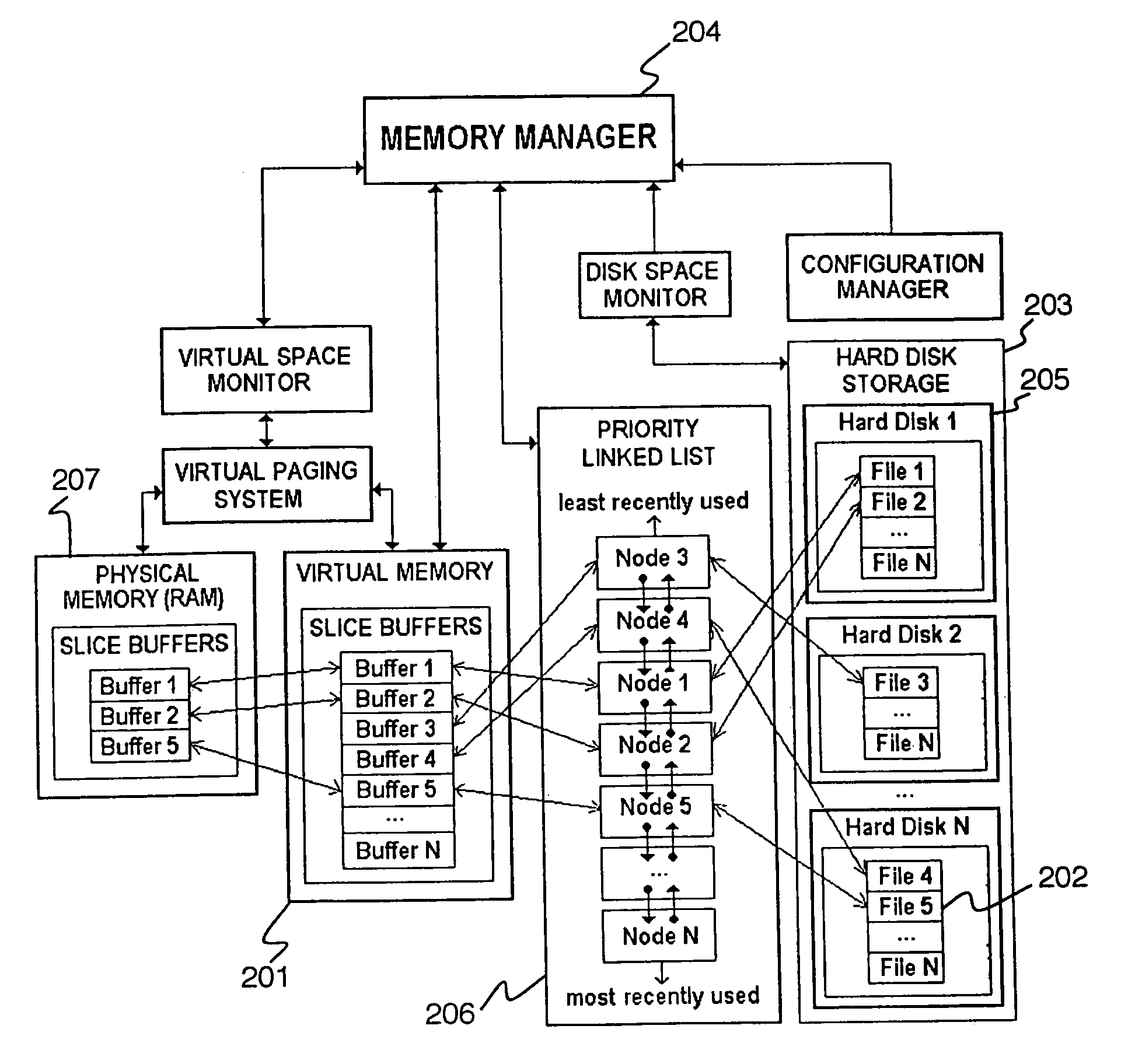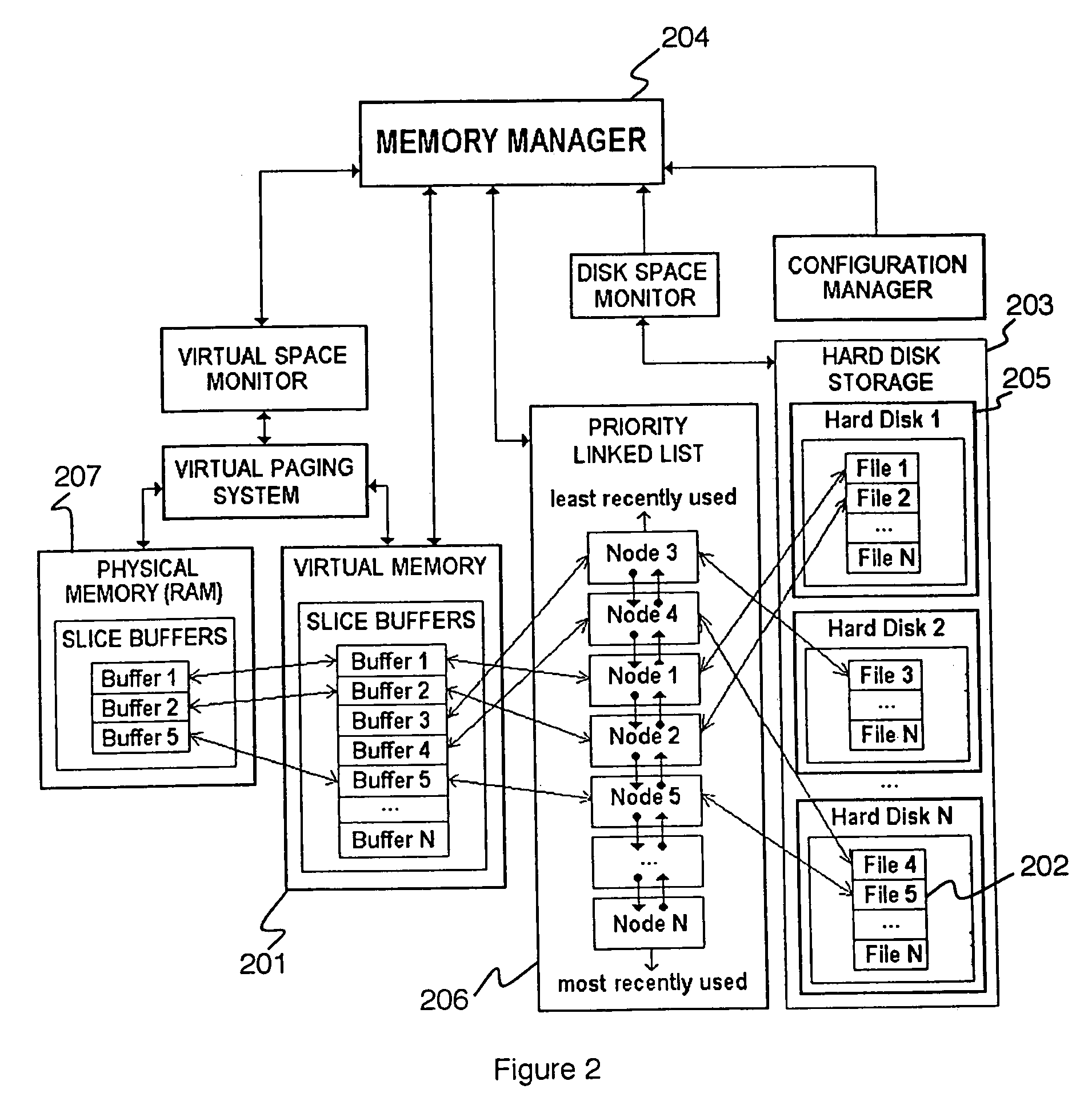Advanced memory management architecture for large data volumes
a data volume and memory management technology, applied in the field of data processing, can solve the problems of reducing the performance of volume visualization methods, generating very large datasets comprising hundreds, and even thousands of slices, and exacerbated memory limitations
- Summary
- Abstract
- Description
- Claims
- Application Information
AI Technical Summary
Benefits of technology
Problems solved by technology
Method used
Image
Examples
Embodiment Construction
[0031]According to an embodiment of the present invention, computer memory is efficiently managed, wherein the memory is allocated for a data volume. A method of managing memory is disclosed by way of an example in terms of an imaging application for the storage and visualization of two-dimensional slices and three-dimensional volumes comprising such slices. Referring to FIG. 2, a series of memory buffers 201 is allocated for each two-dimensional slice. The data contained in each memory buffer can be obtained, for example, from medical tomographic scanners such as Magnetic Resonance (MR), Computed Tomography (CT), Positron Emission Tomography (PET), or any other apparatus capable of producing a series of slices in a grid-like array. Each memory buffer or slice buffer has its own virtual paging file, e.g., 202, which can be paged-in from or paged-out to a storage device 203. The storage device can be, for example, a magnetic hard-disk device. A memory manager 204 can create and acces...
PUM
 Login to View More
Login to View More Abstract
Description
Claims
Application Information
 Login to View More
Login to View More - R&D
- Intellectual Property
- Life Sciences
- Materials
- Tech Scout
- Unparalleled Data Quality
- Higher Quality Content
- 60% Fewer Hallucinations
Browse by: Latest US Patents, China's latest patents, Technical Efficacy Thesaurus, Application Domain, Technology Topic, Popular Technical Reports.
© 2025 PatSnap. All rights reserved.Legal|Privacy policy|Modern Slavery Act Transparency Statement|Sitemap|About US| Contact US: help@patsnap.com



